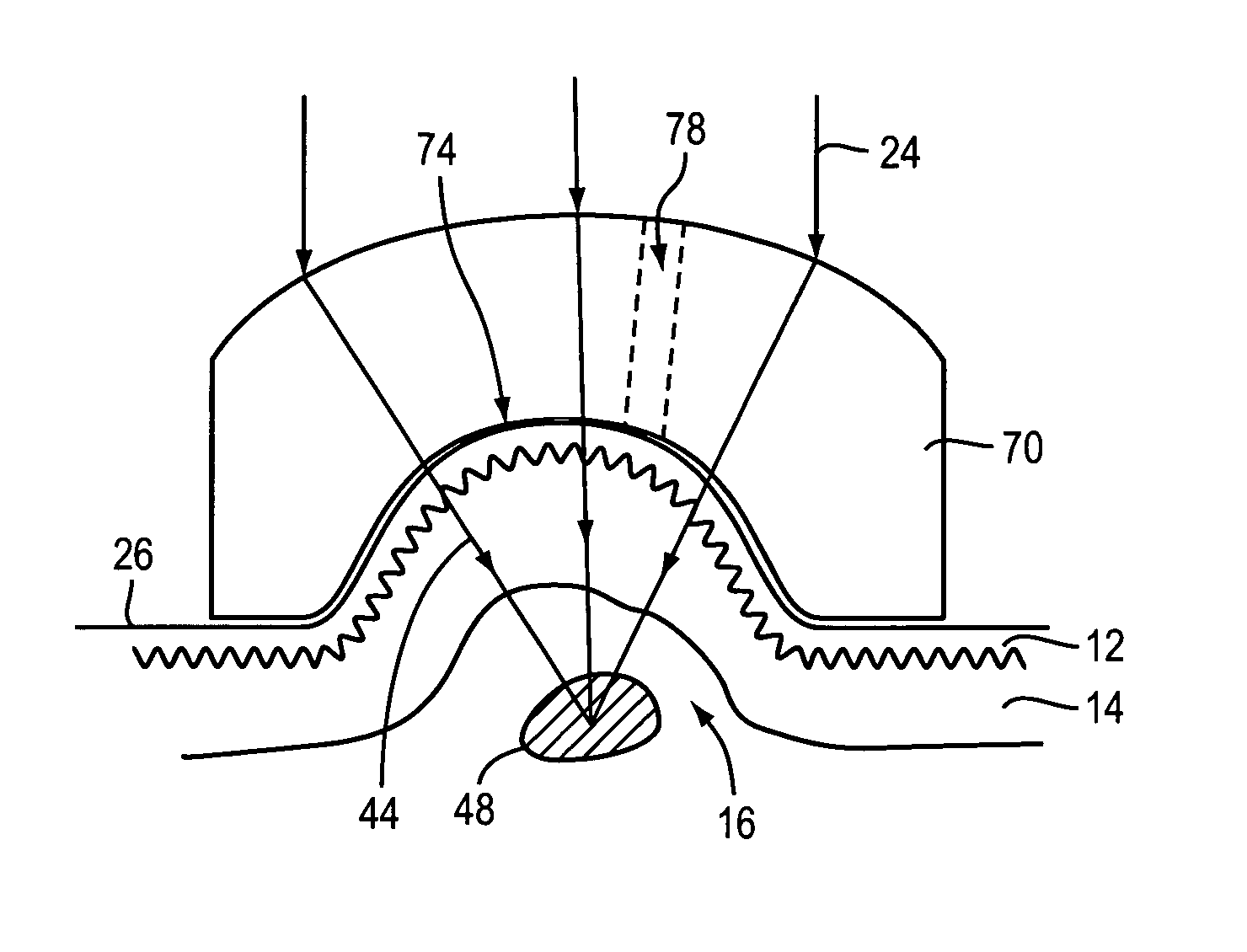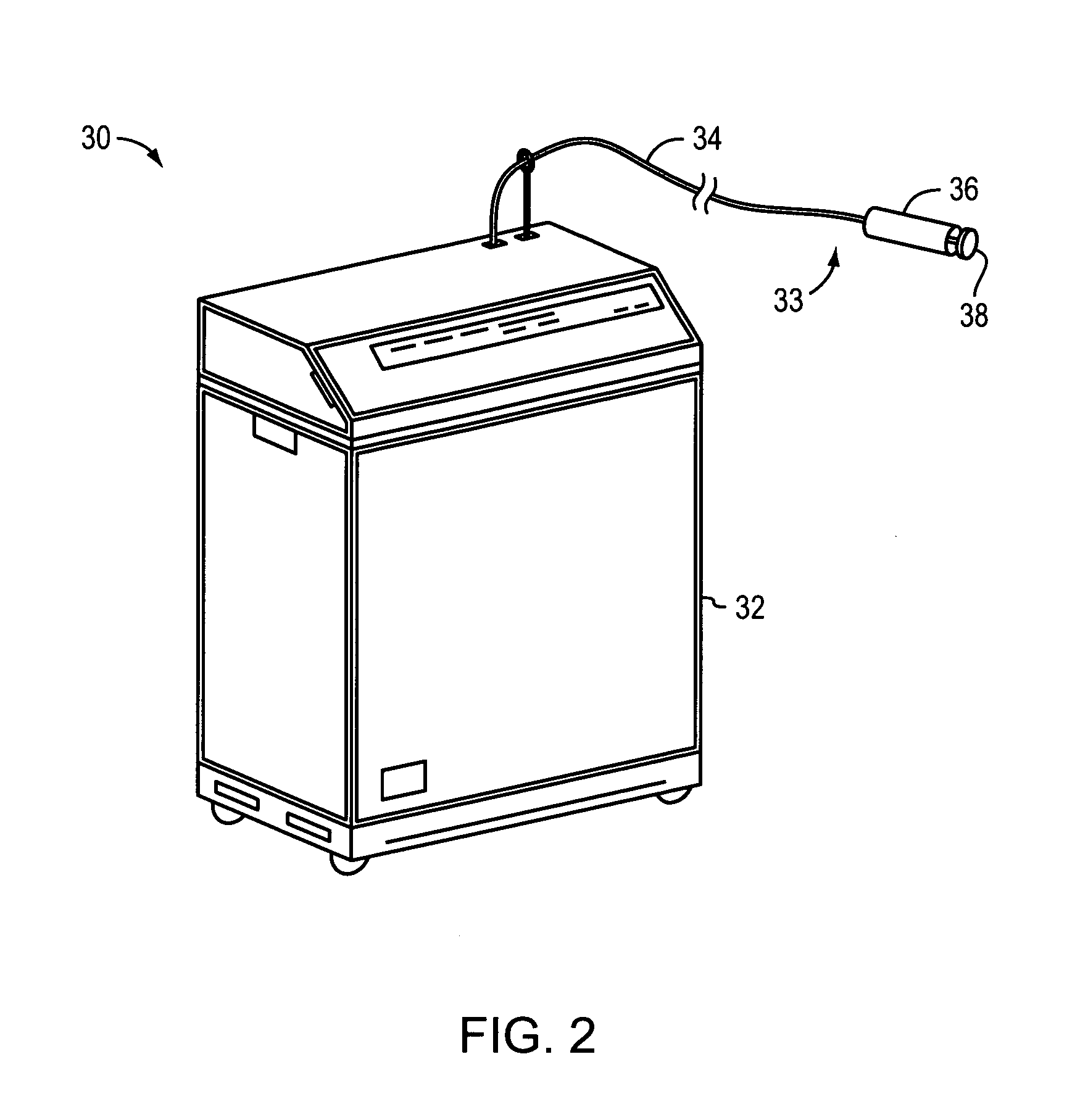Method of treating cellulite
a cellulite and cellulite technology, applied in the field of cosmetic treatments, can solve the problems of affecting the appearance of skin, requiring considerable recovery time, swelling and inflammation of tissue, etc., and achieve the effects of reducing fat, preventing additional fatty tissue, and prolonging the li
- Summary
- Abstract
- Description
- Claims
- Application Information
AI Technical Summary
Benefits of technology
Problems solved by technology
Method used
Image
Examples
Embodiment Construction
[0031]Subcutaneous fat and / or cellulite can be treated by injuring fatty tissue (e.g., a fatty deposit located at or proximate to the dermal interface) and by thickening and / or strengthening of the dermis, which can prevent and / or preclude additional fatty tissue from perturbing the dermal interface. In various embodiments, a treatment can, for example, reduce fat, remove a portion of fat, improve skin laxity, tighten skin, strengthen skin, thicken skin, induce new collagen formation, promote fibrosis of the dermal layer or subcutaneous fat layer, or be used for a combination of the aforementioned.
[0032]FIG. 1 shows a cross-section of skin 10 including an epidermal layer 12, a dermal layer 14, and a layer of fatty tissue 16. A cellulite bump 18 is formed by a portion 20 of the fatty tissue 16 perturbing the dermal interface 22. The fatty tissue can push into and / or against the dermal interface 22. In some embodiments, a portion of the fatty tissue can permeate or cross the dermal in...
PUM
 Login to View More
Login to View More Abstract
Description
Claims
Application Information
 Login to View More
Login to View More - R&D
- Intellectual Property
- Life Sciences
- Materials
- Tech Scout
- Unparalleled Data Quality
- Higher Quality Content
- 60% Fewer Hallucinations
Browse by: Latest US Patents, China's latest patents, Technical Efficacy Thesaurus, Application Domain, Technology Topic, Popular Technical Reports.
© 2025 PatSnap. All rights reserved.Legal|Privacy policy|Modern Slavery Act Transparency Statement|Sitemap|About US| Contact US: help@patsnap.com



